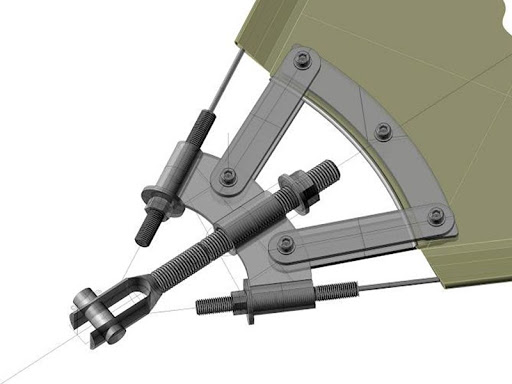Overview
Tensile fabric structures, in general, is divided into two main segments, i.e., a metal framework, which is usually aluminum or steel, and a fabric that covers up the framework. Tensile structures are also known by different names, such as Tension membrane structures, tensile fabric structures, tensile structures, thin-shell structures, to name a few.
This article gives excellent attention to detail about understanding the different tensile structures, and it is beneficial for contractors, architects, and potential customers.
How do the structures of tensile construction work?
Tensile uses a unique construction method, which is quite different from traditional construction, which preferably uses bricks and mortar. Additionally, tensile uses membrane and steel, which is quite beneficial compared to conventional construction.
#Prefabrication Process
To start, a modular lattice framework is built using steel components. All these steel components, in general, have been manufactured away from the construction site, and the process is known to be Prefabrication.
After the Prefabrication process, once the components reach the construction site, then the assembly process into the building frame gets quite fast.
Finally, the fabric membrane is rolled on the frame, and then the ‘tensioned’ is pulled upon.
It is also seen that tensile structures don’t rely upon rigidity and gravity principles, and hence the materials are relatively lighter than traditional construction.
Instead, they make use of internal stresses such that the fabric and framework form a rigid structure.
Due to tension-based geometric construction, it is also sometimes known as tension membrane buildings.
What are the different types of Tensile Fabric Structures?
- Steel and Aluminum
Tensile structures are made using metal frames, which are either steel or aluminum. This also links to another aspect in which the tensile structures are categorized into permanent or temporary. So, if a tensile structure is constructed using aluminum, it is most likely to be temporary, while on the other hand, if a tensile structure is made using steel, it is most likely to be permanent.
- Enclosed and Unenclosed
Some of the tensile structures that you may witness are fully enclosed. They have roofs, walls, and function similar to a traditional building.
On the contrary, some of the tensile structures don’t have walls.
Instead, they act as pavilions and canopies that would give shelter but perhaps not the total protection.
What are the applications of Tensile Fabric Structures?
Tensile structures come up with many benefits. They are entirely sustainable, and they come up with many design options.
The best part is they are quite ideal as it can be used for any project which would require a large indoor space.
Some of the typical applications of tensile structures are:-
- They are used in Leisure centers and sports facilities.
- They can ideally be used in film studios, Exhibition venues, and many other commercial facilities.
- They can be used in warehouses
- They work well with handling facilities and port storage.
- They can be used with Aircraft hangers.
Tensile fabrics are quite popular at harbors and ports because they can be used in very harsh environments. The tensile structures are relatively resistant to corrosion, making it quite famous for recycling buildings and widespread waste.
# Tensile structures can easily reach 100 meters of clear span.
It is known that some of the tensile contractors can create buildings that can quickly clear a span of 100 meters.
This potentially means that there would be no columns or internal supporting struts to cause any interruptions.
This eventually makes the tensile fabric structures ideal for industrial handling facilities such as sports training centers.
What are the advantages of selecting a Tensile Fabric Structures?
There are many advantages to using a Tensile Fabric structure. The key advantages of tensile structures are that it can easily allow natural light to get inside. You can easily create a much attractive building without having to break the bank.
Are the tensile structures Affordable?
The materials, design, and methodology that is used in tensile construction are quite economical. Thus, you won’t have to compromise on the design aspect at all.
You should keep one thing in mind that tensile is not suitable for every project.
But, on the other hand, if you are planning for a leisure facility, aircraft hangar, warehouse, or any different kind of project that would require sizeable clear span internal space, then you should opt for tensile structures.
Are the tensile structures sustainable?
Yes, tensile structures are quietly sustainable. Let us look at the points mentioned below to support our view:-
- Fewer materials
If you compare the tensile structures with the traditional buildings, then it uses significantly fewer materials. It eventually helps out in saving energy, time, and money. Additionally, it also cuts down other aspects, such as manufacturing and groundwork.
2. Better energy performance
The roofs that are made using fabric membrane allow the natural light to come in. So, during the daytime, you would rarely need electric lights.
3. Reduced lifecycle costs
Tensile structures have high energy performance, low maintenance, and perhaps many cost benefits, making tensile structures a sustainable long-term choice.
4. Low maintenance
Tensile fabric structures require less maintenance if you compare it to a traditional building of the same size.
Lastly, sustainability is a key benefit of the following type of structure.
Steel or Aluminum: Which is suitable for your project?
Aluminum can be an excellent choice for temporary and smaller structures as it is not very heavy. On the other hand, if you are looking out for something permanent, then a steel frame (Mild Steel) is highly recommended.
Mild Steel is known to be quite durable and more robust. It has an excellent strength-to-weight ratio, and it can cover greater distances quite reliably.

